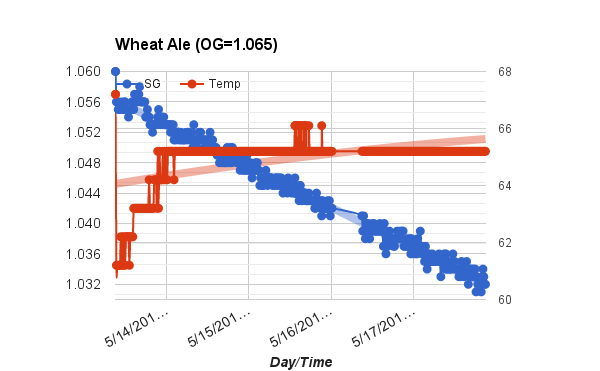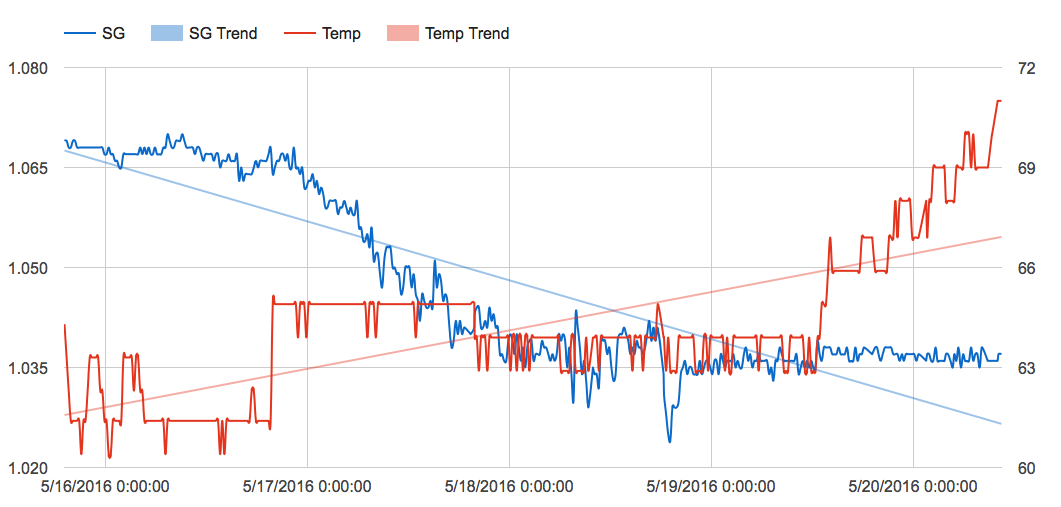Nice. I brewed a ~1050 Pale Ale Saturday afternoon and my hydrometer claimed 1049. The Brewometer said 1051 after about 30 mins. Temp was pretty much dead on too.
I personally could care less if the SG or the temp are off a point/degree or two. I will still probably take hydro samples pre and post to enter into my log as a matter of habit. I am more interested in trends and being able to monitor remotely, and so far this thing delivers.
Which reminds me... I rarely use dry yeast but I did on this brew because I didn't have time to make a starter. Rehydrated a packet of US-05 for 5.5 gals of oxygenated wort the in the fermenter. Damn lag time is way too much for my liking. 24 hours post pitch, but it still was showing no signs of life (Brewometer nor airlock). 36 it was starting to get going, but not with much vigor. Now at 48 hours, it's down to 1048... Gimme a break! 1500ml liquid starter would be half fermented by now.
I personally could care less if the SG or the temp are off a point/degree or two. I will still probably take hydro samples pre and post to enter into my log as a matter of habit. I am more interested in trends and being able to monitor remotely, and so far this thing delivers.
Which reminds me... I rarely use dry yeast but I did on this brew because I didn't have time to make a starter. Rehydrated a packet of US-05 for 5.5 gals of oxygenated wort the in the fermenter. Damn lag time is way too much for my liking. 24 hours post pitch, but it still was showing no signs of life (Brewometer nor airlock). 36 it was starting to get going, but not with much vigor. Now at 48 hours, it's down to 1048... Gimme a break! 1500ml liquid starter would be half fermented by now.
































![Craft A Brew - Safale BE-256 Yeast - Fermentis - Belgian Ale Dry Yeast - For Belgian & Strong Ales - Ingredients for Home Brewing - Beer Making Supplies - [3 Pack]](https://m.media-amazon.com/images/I/51bcKEwQmWL._SL500_.jpg)




























